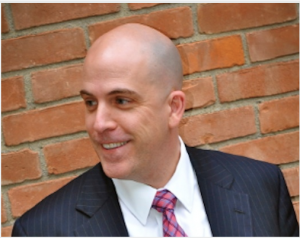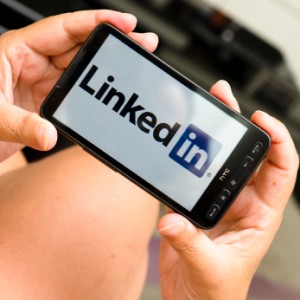Real People, Real Trust: What Trust-based Strategy Consulting Looks, Feels, and Sounds Like
 Janet Andrews is a senior-level consultant at SRA’s Touchstone Consulting Group, a strategy and management-consulting firm. Janet spends her days running from one U.S. federal government building to the next, working with executives on issues of national interest. Discover Janet’s six tips for building trust-based relationships while getting the job done.
Janet Andrews is a senior-level consultant at SRA’s Touchstone Consulting Group, a strategy and management-consulting firm. Janet spends her days running from one U.S. federal government building to the next, working with executives on issues of national interest. Discover Janet’s six tips for building trust-based relationships while getting the job done.
A Matter of Focus
“Janet’s reputation can be described as polished, thoughtful, and methodical,” says Jen Vanmeter, a colleague of Janet’s who teaches Trusted Advisor programs in-house and who co-wrote this blog. “She’s known for her smarts, her work ethic, and her integrity—she does exactly what she says she’ll do, when she says she’ll do it.” Jen continues, “She’s incredibly busy, and yet she takes time to pay attention. Even in a quick hallway chat, she’s focused on you, not the meeting she’s dashing off to.”
Jen and Janet spoke at length about how to build trust-based relationships in the midst of demanding and high-stakes projects. Here are Janet’s six maxims for client relationships that really work.
1. Know Yourself; Know Others Even Better
When Janet thinks about building trust in business relationships, she makes it a point to step back and think what is most important for the person she’s talking to.
“If you have a client who leads with social connection, then that’s where you need to put your foot out first. If someone is results-oriented, they might not want to chat—they want to know what we did for them today. This colors how I position things; it helps me think, ‘How do I start off that conversation?’ That awareness of my own style and preferences helps me see that what I want to lead with maybe isn’t what will work best for them.”
2. Remember It’s Their Truth, Not Yours
“Sometimes your version of what is right isn’t right for your client,” Janet says. “When I want my clients to do the right thing according to me, rather than the right thing according to their reality, I can easily become frustrated and therefore less effective.
“When I view their world with a lens of objectivity and put aside judgment of ‘that choice is good or bad,’ then I can walk into conversations with a more open mind. And I’ve noticed that clients respond in kind. When I remember they’re the ones that are living it, not me, then I focus on doing my best to advise them. Yes, I’m trying to sway them, but I keep in mind the decisions and choices that come out of it are theirs to own.
“Am I disappointed sometimes? Of course. But I keep reminding myself that whatever conclusion they come to, it is their truth. It’s my job to give them my best thinking. Pushing them on something they don’t want—or don’t want yet—is going to break trust, not build it, no matter how ‘right’ I think I am.”
3. Focus on the Dialogue, not the Difficult
While Janet acknowledges that there are always difficult conversations to be had in any business relationship, she says they don’t have to be personally difficult.
“Earlier in my career, I might have taken more of a defensive posture with clients whose style can be aggressive or combative. Now, I see a tense conversation as less of a conflict, and more of a dialogue. And when I feel less tense, my clients seem to also.”
4. Bravely Go First
“If there’s an elephant in the room that no one wants to bring up, I take a deep breath and bravely go first—once I’ve put aside my own judgments. If you can somehow frame the elephant by thinking about the other person’s motives, viewpoint, and how they like to lead, it can bring down their barriers to listening, so a dialogue—not a stand-off—can ensue.”
5. Slow Down and Listen
Janet emphasizes the importance of listening, which can be challenging in the fast-paced world of strategy consulting. “Learning to be less focused on dictating how the play is going to end, and more focused on listening along the way, has been a real shift for me in my career.
“I remember once we were working on a key deliverable for a client. We’d been back and forth a couple of times on drafts. The client was mad at our team for not taking her comments seriously enough, and the team was frustrated because they thought she was being difficult. All it took was a real conversation and some patience to break the logjam. Slowing down to really listen made me realize that we were all arguing the same point. When I acknowledged that, she agreed and we were able to move on.”
6. Don’t Sweat It When You Don’t Click
“Not all my clients consider me their trusted advisor. That used to worry me—of course I want everyone to like me. Now I recognize that sometimes it’s not going to click. So part of being a trusted advisor is being self-aware enough to recognize when it’s time to pass that relationship off to someone else who might be better suited for the relationship.”
Janet’s self-knowledge, her commitment to continuous improvement, and her willingness to focus on relationships as well as results clearly make a difference—for her colleagues as well as her clients.
Connect with Janet on LinkedIn.
——–
The Real People, Real Trust series offers an insider view into the challenges, successes, and make-it-or-break-it moments of people from all corners of the world who are leading with trust. Check out our prior posts: read about Chip Grizzard, a CEO You Should Know; Ralph Catillo: How One Account Executive Stands Apart; Anna Dutton: A Fresh Perspective on Sales Operations; and Heber Sambucetti: A Learning Consultant’s Approach to Leadership.

 From the Front Lines: Walking Away from the Table
From the Front Lines: Walking Away from the Table
 A colleague recently asked me how I handle LinkedIn invitations from people I don’t really know. Another colleague asked about connecting to people whose reputation is questionable. While the same questions can be asked about Facebook, Google Plus and other social media, because of the differences in the types of services and benefits each offer, I’m only going to discuss LinkedIn here, and address mostly issues relating to trust.
A colleague recently asked me how I handle LinkedIn invitations from people I don’t really know. Another colleague asked about connecting to people whose reputation is questionable. While the same questions can be asked about Facebook, Google Plus and other social media, because of the differences in the types of services and benefits each offer, I’m only going to discuss LinkedIn here, and address mostly issues relating to trust. If one wants to be a pessimist about the future of work, there is no shortage of opportunities to nurture one’s paranoia. A compelling new work by Lynda Gratton—
If one wants to be a pessimist about the future of work, there is no shortage of opportunities to nurture one’s paranoia. A compelling new work by Lynda Gratton— This post is not about piling on
This post is not about piling on  I’ve been giving business presentations for nearly 20 years. The more I do it, the more I appreciate just how hard it is to do it really well. Today’s blog post features four resources to help with various aspects of speaking and presenting. Please add your favorites!
I’ve been giving business presentations for nearly 20 years. The more I do it, the more I appreciate just how hard it is to do it really well. Today’s blog post features four resources to help with various aspects of speaking and presenting. Please add your favorites! Usually “acceptance” means giving in to some over-powering force–grudgingly. Active acceptance is not part of the basic toolkit of trust, but it belongs in the advanced course. If you can learn to actively accept, you will gain unheard-of levels of trust. Not to mention, you’ll be a lot happier.
Usually “acceptance” means giving in to some over-powering force–grudgingly. Active acceptance is not part of the basic toolkit of trust, but it belongs in the advanced course. If you can learn to actively accept, you will gain unheard-of levels of trust. Not to mention, you’ll be a lot happier.